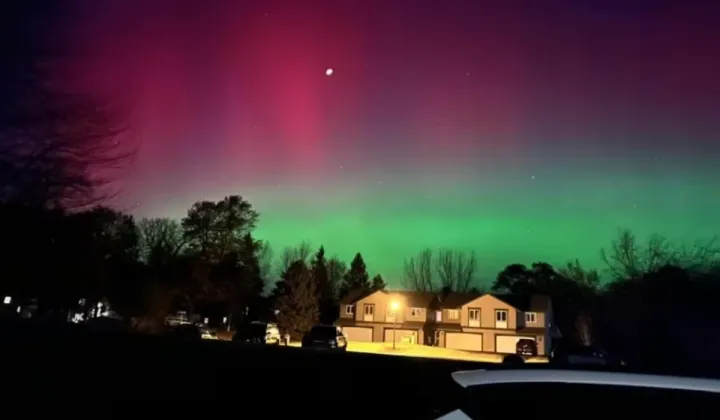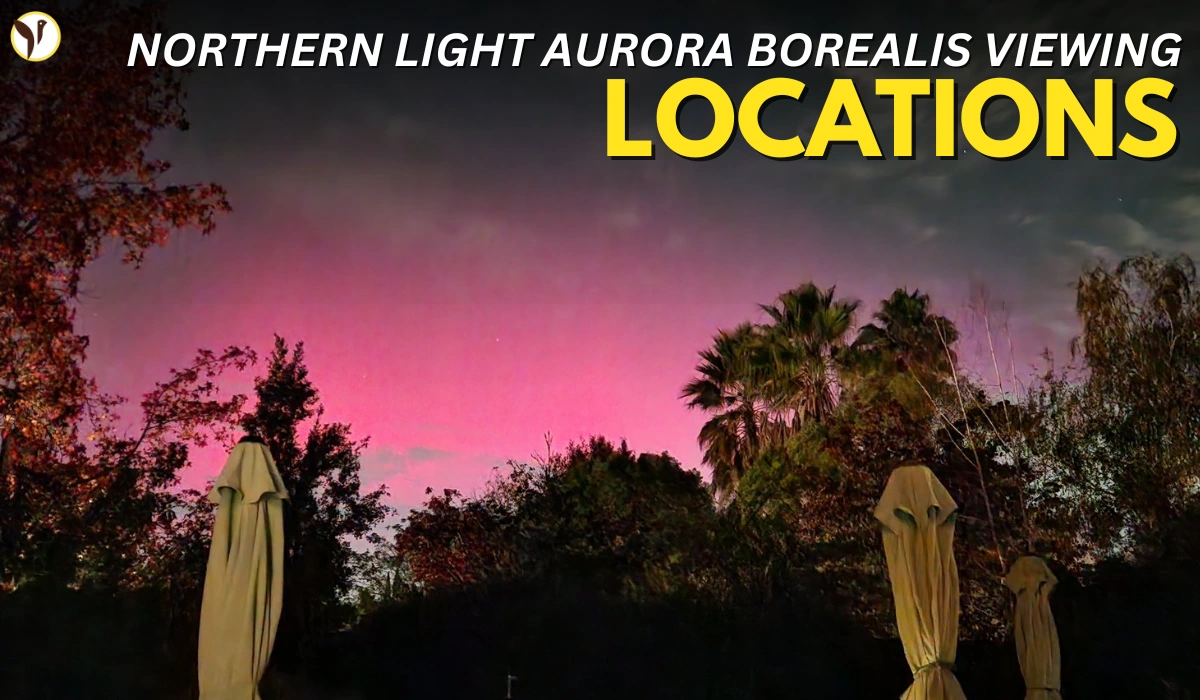Northern Lights Tonight: Ready for a light show in the sky? Tonight, the northern lights—also called the aurora borealis—could brighten skies across much of the United States, thanks to a rare and powerful solar storm. The National Oceanic and Atmospheric Administration (NOAA) says a geomagnetic storm rated G4 (severe, Level 4 out of 5) has arrived, giving Americans even in the central and southern states a strong chance to enjoy the colorful aurora.

States with Best Northern Lights Viewing Tonight
If you’re hoping to see the northern lights tonight, check out the sky in these states, which have the best chance for a show:
-
Washington
-
Montana
-
North Dakota
-
Minnesota
-
Wisconsin
-
Michigan
-
Maine
But don’t worry if you’re not in the north—a good streak of aurora may pop up in Oregon, Nebraska, Iowa, Ohio, Pennsylvania, New York, Vermont, New Hampshire, Massachusetts, and even as far south as Alabama and northern California.
When and How to Watch Aurora Borealis in the US
To catch the northern lights, try looking up between 10 pm and 2 am local time. Experts say the best chances are late at night, but the show could start earlier or go on longer, depending on the storm. Always check the latest aurora forecast online, and use an aurora map for real-time updates. Recently a user @MrDrD34TH posted on X that he have seen his forst aurora borealis and shared images, "Good Morning 😁 7am and im back Home since a bit.
I saw my first #Auroraborealis with my naked eyes ever!!! Im so fkng Happy 🥹 "
Good Morning 😁 7am and im back Home since a bit.
— ⭕ Mr Dr D34TH 💀 (@MrDrD34TH) November 12, 2025
I saw my first #Auroraborealis with my naked eyes ever!!! Im so fkng Happy 🥹
Smartphone Shot/Timelapse - 50°N West Germany 😭💖💃💗😭
Will Upload later my Camera Shots...
What an Insane Night!!!#Polarlichter#Northernlights pic.twitter.com/Zs5jV5yRiQ
And another user @doomcake420 posted a video of Aurora Borealis 10 minutes ago:
Aurora in Livermore, California!
— DOOMCAKE (@doomcake420) November 12, 2025
20:30-22:00 PST and ongoing
visible to naked eye, vividly around 20:45-21:30 PST / ~06:00 GMT@TamithaSkov pic.twitter.com/s2q4tyvRei
What Causes Geomagnetic Storms and Auroras?
These brilliant lights happen when solar flares and coronal mass ejections (CMEs) from the sun send charged particles toward Earth. The particles hit our planet’s magnetic field and light up the night sky with glowing reds, greens, and purples. This week, scientists report major X-class solar flares triggering tonight’s event, so we're seeing one of the strongest northern lights displays in recent years.
Northern Lights Map and Aurora Watch Resources
Use NOAA's aurora forecast and northern lights maps to see where visibility is best. Many websites and apps give live updates and alerts, so skywatchers can plan their viewing locations quickly. Check local cloud cover since clear skies matter most for a good view.
Northern Lights in Ontario and Canada
Canada is also getting a treat—areas from Alberta to Ontario could see strong aurora displays, especially from sunset through late night. Cities like Toronto and Ottawa are on northern lights alert, so don’t forget to look up if you’re in eastern or northern Canada tonight.
Red Northern Lights: What Do They Mean?
Sometimes, especially during powerful storms, the aurora glows red instead of green. This happens when the solar particles reach higher into Earth’s atmosphere. If you spot red northern lights tonight, you’re watching a rare phenomenon created by strong solar activity.


/content/stories/thumb/thumb6914359a2895b3.43995682.webp)
/content/stories/thumb/thumb69142e815a1fc8.64399473.webp)
/content/stories/thumb/thumb69141c4d9f8292.24906267.webp)
/content/stories/thumb/thumb69141dd17f67e0.01400695.webp)
/content/stories/thumb/thumb69132e94465f92.91733061.webp)


